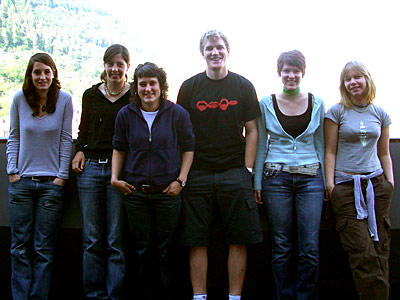
Education, Romansh style

Education is recognised as one of the most important ways of preserving the minority language Romansh, which is one of canton Graubünden's three official languages.
But there is controversy over how best to teach it in schools, with German becoming more popular and moves to introduce a standardised version, Rumantsch Grischun (RG).
Romansh is spoken by around 15 per cent of residents in the southeastern canton, with German accounting for 68 per cent and Italian ten per cent.
For the most part, Romansh is taught in its traditional heartlands, such as Engadine or in the Surselva valley.
It is also taught in German-speaking Chur, Graubünden’s capital, where the Graubünden Cantonal School offers a bilingual school-leaving certificate (baccalaureate) in Romansh and German.
The idea behind the qualification, which was introduced in 1999, is that pupils can continue their education in German, which they are most likely to use at work or for higher education, while not neglecting Romansh, which they speak with their families and in their home valleys.
Pupils from all over the canton attend the renowned trilingual secondary school, with many Romansh speakers living in Chur during the week and returning home at weekends.
Class GC
Class GC, which is made up of 16- and 17-year-old pupils, mostly from the Engadine, is studying for the dual qualification.
“They have Romansh language lessons three times a week and a fourth lesson introduces them to RG,” Chasper Pult, their teacher, told swissinfo. “They also have other topics taught in Romansh, such as biology and history.”
The remaining lessons are in German, which all the pupils speak perfectly. But the Romansh element remains important.
“This is the language that we speak the most and among ourselves,” said one pupil, Domenic.
The Romansh pupils, of which there are around 80 at the 1,500-student school, use their own Romansh as there are five idioms.
This has done much to integrate this linguistically diverse minority at the school, with pupils from different regions learning to understand and use each other’s variants.
Their enthusiasm for the language is clear. “Romansh is also like an identity for us,” explained fellow pupil Gianna Martina.
Debate
But although Romansh is thriving at the cantonal school, in other parts of Graubünden the debate over the direction of Romansh education is raging.
“Education is essential to any minority language and culture because it is a form of institutionalisation of the cultural background,” said Pult, who is also a Romansh expert.
In Romansh-speaking areas it used to be that the local idiom was the only language taught for the first three years before being gradually replaced by German.
“This meant that children of non-Romansh speaking parents had to assimilate linguistically, even in villages where Romansh was in the minority, which was a unique situation in Europe,” Pult said.
But in areas where Romansh has become less used and German more dominant, there has been pressure for German to be taught early on as well.
This has already happened in the villages of Pontresina and Samedan in the Upper Engadine, which have introduced bilingual school models.
The move has been criticised by some, notably the Romansh promotion organisation Lia Rumantscha, which fears that Romansh will not be adequately protected.
Standardisation
Another challenge is Rumantsch Grischun. Graubünden is keen to introduce the standard language into primary schools by 2010, mainly for cost reasons. At present it must provide school materials in all five Romansh languages.
Pupils would learn to write and understand RG, while still speaking their own idioms.
But the idea is unpopular. “Many regions say children will learn a language they do not use in everyday life. They also have a written tradition in the idioms that they want to keep,” said Pult.
Only one region, the Val Müstair in Engadine, has declared a clear interest in introducing RG in its schools.
Added to this is a recent survey, which found that teachers – who would also have to learn RG – are split over the issue.
For their part, those currently going through the education system – the pupils of the Graubünden Cantonal School – are keen for Romansh to stay part of the curriculum.
“I think one will have to put in a lot of effort to keep Romansh,” said Gianna Martina. “But I think when we teach it to our children then it will be preserved.”
swissinfo, Isobel Leybold-Johnson in Chur
In Graubünden communes decide their administrative and school languages. The canton provides the materials for Romansh primary schools.
Romansh may the language of tuition or taught as a subject.
Romansh secondary schools used to follow the same curriculum as German only schools (only two extra lessons for Romansh). Since 1999 the canton’s academic secondary schools can offer a bilingual matura or baccalaureat.
Graubünden wants all primary school children to start reading and writing RG by 2010. It is also drawing up a RG concept for schools.

In compliance with the JTI standards
More: SWI swissinfo.ch certified by the Journalism Trust Initiative




























You can find an overview of ongoing debates with our journalists here . Please join us!
If you want to start a conversation about a topic raised in this article or want to report factual errors, email us at english@swissinfo.ch.